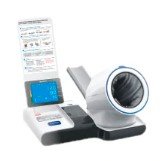The Evolving Role of Phlebotomists in Telemedicine: Adapting to New Technologies and Protocols
Summary
- Phlebotomists are playing an increasingly important role in the growing field of telemedicine in the United States.
- With the rise of telehealth services, phlebotomists are required to adapt to new technologies and protocols to collect blood samples remotely.
- The role of phlebotomists now includes not only traditional blood collection techniques but also communication and patient education skills to ensure successful telemedicine interactions.
Introduction
Telemedicine has revolutionized the way healthcare services are delivered in the United States. With advancements in technology and an increasing demand for convenient healthcare access, telemedicine has become more prevalent than ever before. As telemedicine continues to grow, the role of phlebotomists has also evolved to accommodate these changes. In this article, we will explore how the role of phlebotomists has changed with the increase in telemedicine utilization in the United States.
The Evolving Role of Phlebotomists in Telemedicine
Traditional Blood Collection vs. Remote Blood Collection
Phlebotomists are traditionally responsible for collecting blood samples from patients in a clinical setting. However, with the rise of telemedicine, phlebotomists now have to adapt their techniques to collect blood samples remotely. This shift has required phlebotomists to learn new skills and protocols to ensure accurate and safe blood collection outside of the traditional healthcare setting.
Utilization of Technology
Telemedicine relies heavily on technology to connect patients with Healthcare Providers remotely. Phlebotomists have had to embrace new technologies such as secure video conferencing platforms and Digital Health Record systems to facilitate remote blood sample collection. This integration of technology into their Workflow has streamlined the process of collecting and transmitting blood samples, ultimately improving patient care in telemedicine settings.
Communication and Patient Education
In addition to mastering new technologies, phlebotomists in telemedicine settings must also possess strong communication and patient education skills. Since they are often the primary point of contact with patients during remote blood collection, phlebotomists must be able to explain procedures, answer questions, and provide reassurance to patients who may be unfamiliar with telemedicine. This shift in responsibilities highlights the importance of Patient-Centric care in telemedicine.
Adherence to Regulations and Protocols
As with any healthcare practice, phlebotomists in telemedicine settings must adhere to strict Regulations and protocols to ensure patient safety and confidentiality. They must be well-versed in the legal implications of collecting blood samples remotely and follow established guidelines to maintain the integrity of the samples throughout the telemedicine process. This attention to detail is crucial in upholding the standards of care in telemedicine.
The Future of Phlebotomy in Telemedicine
As telemedicine continues to expand in the United States, the role of phlebotomists will likely continue to evolve to meet the demands of this growing field. Phlebotomists may find themselves working more closely with telemedicine providers to develop standardized protocols for remote blood collection and enhance the overall patient experience in telehealth interactions. Additionally, ongoing education and training will be essential for phlebotomists to stay up-to-date on the latest technologies and best practices in telemedicine.
Conclusion
The role of phlebotomists in the United States has undergone significant changes with the increase in telemedicine utilization. Phlebotomists are now required to adapt to new technologies, communicate effectively with patients, and adhere to stringent Regulations to ensure safe and accurate blood sample collection in telemedicine settings. As telemedicine continues to reshape the healthcare landscape, phlebotomists will play a crucial role in delivering high-quality patient care in a remote healthcare environment.

Disclaimer: The content provided on this blog is for informational purposes only, reflecting the personal opinions and insights of the author(s) on the topics. The information provided should not be used for diagnosing or treating a health problem or disease, and those seeking personal medical advice should consult with a licensed physician. Always seek the advice of your doctor or other qualified health provider regarding a medical condition. Never disregard professional medical advice or delay in seeking it because of something you have read on this website. If you think you may have a medical emergency, call 911 or go to the nearest emergency room immediately. No physician-patient relationship is created by this web site or its use. No contributors to this web site make any representations, express or implied, with respect to the information provided herein or to its use. While we strive to share accurate and up-to-date information, we cannot guarantee the completeness, reliability, or accuracy of the content. The blog may also include links to external websites and resources for the convenience of our readers. Please note that linking to other sites does not imply endorsement of their content, practices, or services by us. Readers should use their discretion and judgment while exploring any external links and resources mentioned on this blog.
